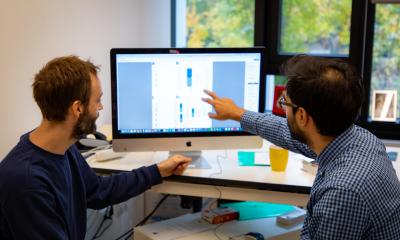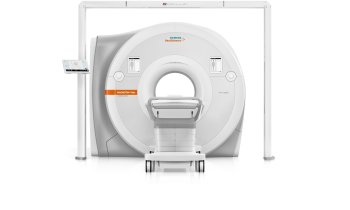Image source: Hans Braxmeier from Pixabay (backgound) / ElaineMeng, Hras surface colored by conservation (RAS structure); Mashup by HiE/Behrends, CC BY-SA 3.0
News • RAS protein mutation
New treatment approach targets cancer 'Death Star'
A new way to target a mutant protein which can cause the deadliest of cancers in humans has been uncovered by scientists at Leeds.
The mutated form of the RAS protein has been referred to as the “Death Star” because of its ability to resist treatments and is found in 96% of pancreatic cancers and 54% of colorectal cancers. RAS is a protein important for health but in its mutated form it can be switched on for longer, leading to the growth of tumours. One drug has already been approved for treatment but it can only tackle a small subset of the total number of cancers driven by RAS. Now a team from the University’s School of Molecular and Cellular Biology has gone further and found a new way to target the protein to pave the way for a greater range of treatments for more patients.
The researchers published their findings in the journal Nature Communications.
Because it causes 20-30% of all known cancers, RAS really is the Holy Grail of therapeutic targets
Amy Turner
The lead author of the report, Dr Darren Tomlinson, of the Astbury Centre for Structural and Molecular Biology, said: “The RAS protein has been referred to as the Death Star with good reason and that’s because it’s spherical and impenetrable, essentially preventing drugs binding and inhibiting it. We've identified a further chink in the Death Star that can be used to develop new drugs beyond the ones already in development.” The researchers used the School of Molecular and Cellular Biology’s own patented affimer biotechnology platform to pinpoint druggable “pockets” on the protein to allow effective treatment to take place. Dr Tomlinson added: “This work opens up the door for the hundreds of other disease targets. We could effectively probe any protein involved in any disease for druggable pockets in the future.”
Co-first author of the report and PhD student Amy Turner, from the School of Molecular and Cellular Biology, said: “Because it causes 20-30% of all known cancers, RAS really is the Holy Grail of therapeutic targets. The fact that it has previously been termed ‘undruggable’ has allowed us to demonstrate the huge impact that our Affimer technology can have when it comes to treating challenging pathologies. We have already identified small molecules that bind to RAS, so it will be very exciting to be involved in developing these over the next few years.”
The researchers say work on expanding more ways to target RAS is still in its early stages but they believe their discovery could lead to new treatments, putting Leeds at the forefront of the fight against cancer.
Source: University of Leeds
07.07.2021











